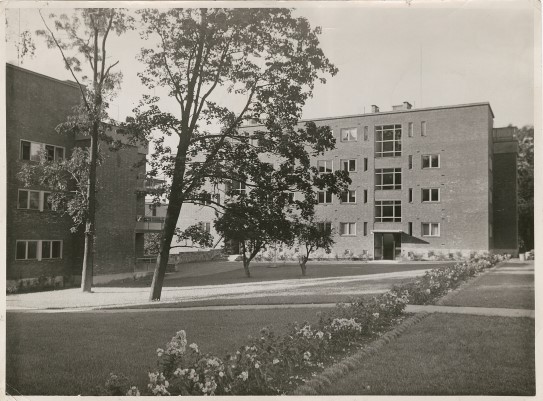Residential blocks, Observatorie terrasse, Oslo
Blakstad & Munthe-Kaas Arkitekter
Transcription
Narrator:
Have you dreamed about finding a good home – for yourself or your family?
In the 1930s, many Norwegians had such a dream. Apartments in Norway’s cities were often cramped and run-down — but now the capital city was expanding, and new residential neighbourhoods were popping up. Living conditions were getting better all the time.
On a hot summer’s day in 1936, two radio reporters from NRK, Norway’s national broadcaster, visited a building site in Observatorie Terrasse, close to Solli Plass in Oslo, to make a programme about modern homes.
From NRK 1936:
“Here we have low-rise four-storey buildings, and they’re not squeezed closely together, there’s open space between them. There are large balconies outdoors where people can sit and breathe fresh air and enjoy the sun.
And you can see colossally large windows that let in the light, so there are no longer any dark rooms. It must be so healthy, much healthier to live in these buildings now than it was before.”
Narrator:
Ideas about healthy living and public health characterized social trends in the 1930s, and ideas about how homes in this new era should be practical, light and airy were a prominent feature of the dominant style of early modernist architecture – otherwise known as functionalism in Scandinavia.
The architects Gudolf Blakstad and Herman Munthe-Kaas were behind several early Modernist masterpieces in Oslo, and when they designed the seven blocks in Observatorie Terrasse, they prioritized daylight and clever spatial solutions, and keeping large areas of open space between the buildings. This was something quite different from the dark and old-fashioned tenement buildings in the centre of Oslo.
Many current housing projects in Norwegian cities lack the essential characteristics of Observatorie Terrasse: light, air and green surroundings. Perhaps this is one of the reasons why apartments in typical early Modernist, or ‘Funkis’, buildings continue to be high on the list of Norwegians’ dream homes.